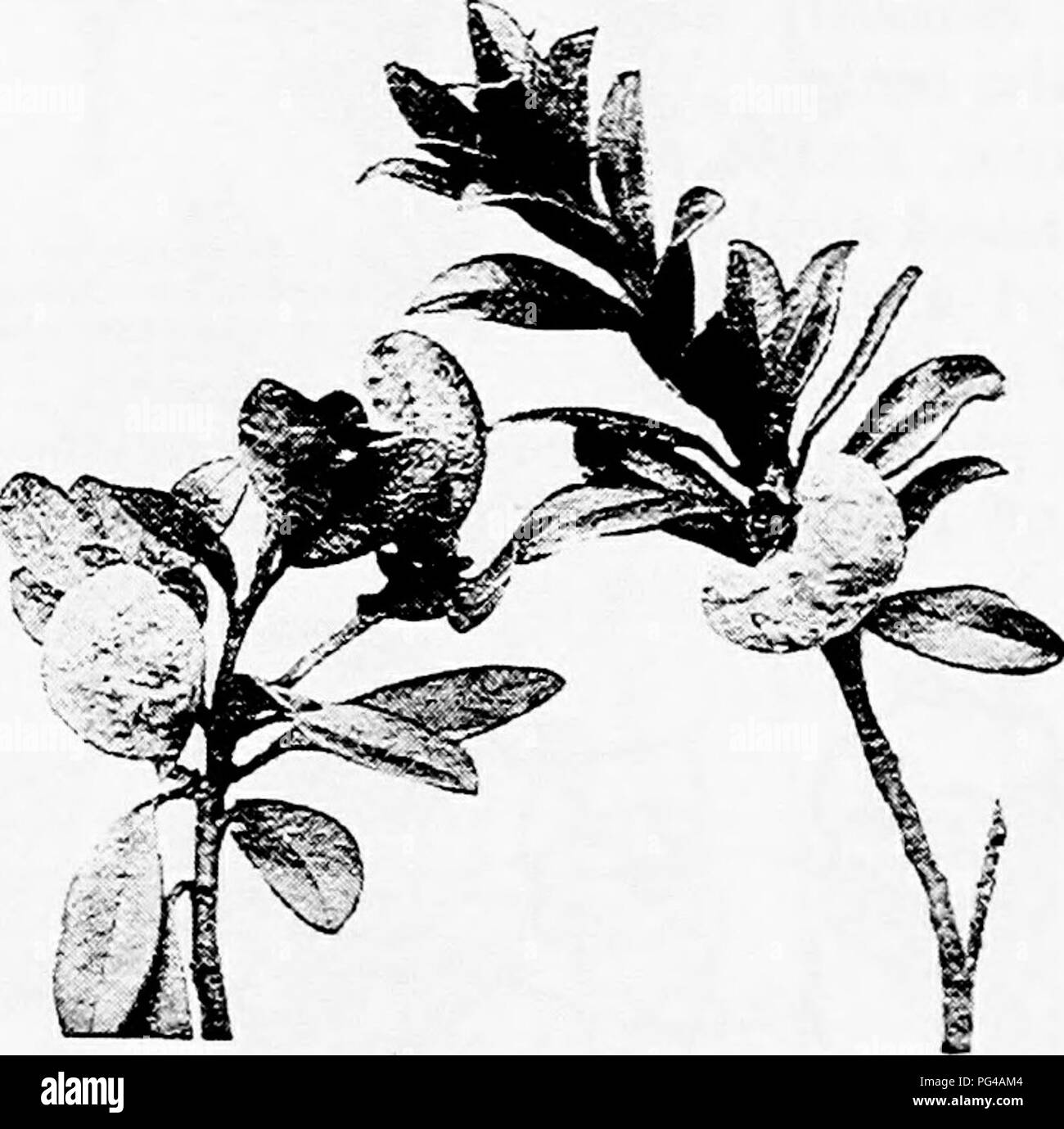. Diseases of plants induced by cryptogamic parasites : introduction to the study of pathogenic Fungi, slime-Fungi, bacteria, & Algae . Plant diseases; Parasitic plants; Fungi. 426 BASIDIOMYCETES. cinium MyrtillvsY causing a premature fall of the leaf and suppression of the flower. The external symptoms of the disease differ somewhat from those on cowberry. Diseased leaves are much larger than the normal, but are neither thickened nor blistered; on the under side they have a whitish or reddish coating, and fall off easily. I have never observed the disease on the stems of bilberry. In spit

Image details
Contributor:
Central Historic Books / Alamy Stock PhotoImage ID:
PG4AM4File size:
7.1 MB (264.4 KB Compressed download)Releases:
Model - no | Property - noDo I need a release?Dimensions:
1587 x 1574 px | 26.9 x 26.7 cm | 10.6 x 10.5 inches | 150dpiMore information:
This image is a public domain image, which means either that copyright has expired in the image or the copyright holder has waived their copyright. Alamy charges you a fee for access to the high resolution copy of the image.
This image could have imperfections as it’s either historical or reportage.
. Diseases of plants induced by cryptogamic parasites : introduction to the study of pathogenic Fungi, slime-Fungi, bacteria, & Algae . Plant diseases; Parasitic plants; Fungi. 426 BASIDIOMYCETES. cinium MyrtillvsY causing a premature fall of the leaf and suppression of the flower. The external symptoms of the disease differ somewhat from those on cowberry. Diseased leaves are much larger than the normal, but are neither thickened nor blistered; on the under side they have a whitish or reddish coating, and fall off easily. I have never observed the disease on the stems of bilberry. In spite of these external differences, it is believed that the host-plants are in both cases attacked by the same species of Exobasidiuin, but I do not know of any observations on the reciprocal infection of the two hosts.. Fig. 259.—Bxohasidium rhododendn ou Rhododendron fen-ugineum. (v. Tubeuf phot.) A disease due to an Exdbasidium is by no means uncommon on Vaccinium uliginosum (bog whortleberry).^ Shoots of diseased plants are deformed, while their leaves become more or less thickened and assume a beautiful rosy coloiir. On Vaccinium Oxycoccos (true cranberry) the shoots and leaflets also become thickened and rose-coloured. Eostrup dis- tinguishes this as a separate species {Exohasidium oxycocci). Ex. andromedae Peck, produces on Andromeda polifolia symptoms similar to those just described for the preceding species. (Britain and U.S. America.) ' Sadebeok {Botan. Centrcdblatt, 1886) records it in large quantity near Harburg. This is the host-species given by Massee (British Funtjus-Flora, 1892). ^Tubeuf, " Mittheilungen." Zeitsch. f. Pflanzenkrankheiten, 1893.. Please note that these images are extracted from scanned page images that may have been digitally enhanced for readability - coloration and appearance of these illustrations may not perfectly resemble the original work.. Tubeuf, Karl, freiherr von, 1862-1941; Smith, William G. London ; New York [etc. ] : Longman